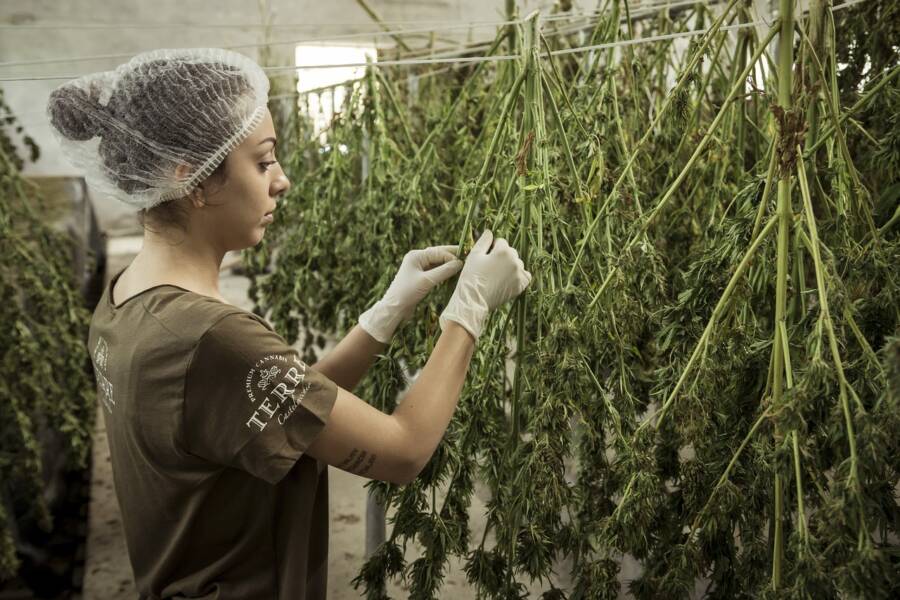If you are like many people, you want to grow cannabis. Many benefits come with doing so, such as having more control over your marijuana, lower costs, and more. However, certain things must be done to ensure you have a good harvest.
For example, with cannabis plants, you cannot let the male plants fertilize the male plants. Doing so will ruin the crop. To avoid this problem, many people purchase feminized seeds.
However, other people don’t want to monitor the light cycle closely. They have lives and want to be able to come and go as they please, never worrying about whether they remember to turn the grow lights on or off. For these individuals, growing with autoflowering seeds is the best option.
What are Autoflowering Seeds?
Autoflowering cannabis strains begin flowering after a specific period. They are not dependent on the light cycle to know when to enter the next phase of growth. Photoperiod strains, in contrast, must follow a rigid light deprivation schedule or they will not move into the flowering stage.
Why Choose Autoflowering Strains?
Autoflowering strains come with numerous benefits. As mentioned, they don’t need light deprivation to flower, and the life cycle is shorter. You can plant the seeds and harvest them in three months in most cases. Autoflowering plants tend to be smaller than their peers, only growing between two and four feet high. Growers can discreetly keep several plants thanks to their compact size. Many people prefer autoflowering strains for this reason because they don’t want others to know about their stash.
Autoflowering Plant Growth Stages
A person might assume autoflowering plants don’t go through the same growth stages photoperiod plants do. They follow the same growth pattern. The difference lies in the timing and length of each stage. The seedling stage typically lasts one to two weeks before the plant moves into the vegetative stage. This stage may end after only two weeks or it might not finish for four weeks. Once the plant completes the vegetative stage, it moves into the flowering state, where it remains for four to six weeks.
Optimal Growing Conditions
You may choose to grow autoflowering strains indoors or out if you live in a warm climate. When growing indoors, you want to establish an 18 to 24-hour light schedule and use a grow light that provides anywhere from 250 to 400 watts. If you decide to grow your crop outdoors, wait until after the last frost to plant the seeds. Doing so will allow you to benefit from the long summer days.
Use soil rich in nutrients and fertilize the plants with a nutrient regimen high in Nitrogen during the vegetative stage. When the plant enters the flowering stage, switch to a fertilizer high in Potassium and Phosphorus.
If using pots to grow your cannabis, always go with five-gallon containers or larger. Maximize the plants’ light exposure by employing techniques such as SCRoG or LST, and supplement with Cal-Mag. However, lower the nutrient strength of this supplement because autoflowering plants need less than photoperiod plants.
Harvesting the Crop
Don’t harvest the crop until the trichomes are at least 30 percent amber in terms of their color. The calyxes should be curled and swelling at the time of harvest. Most autoflowering strains can be harvested ten to 12 weeks after you plant the seeds. It might be tempting to harvest the plants early, but doing so reduces the yield. Once you dry the buds, you should get two to eight ounces of quality product per plant. This yield might vary, however, based on genetics, growing conditions, training methods used, and your skill level. Although these plants require little maintenance or monitoring, you should follow all recommended grow guidelines to maximize your yield. Thanks to their quick growth period, following these guidelines will allow you to have an abundant supply at all times.
TechnologyHQ is a platform about business insights, tech, 4IR, digital transformation, AI, Blockchain, Cybersecurity, and social media for businesses.
We manage social media groups with more than 200,000 members with almost 100% engagement.












































